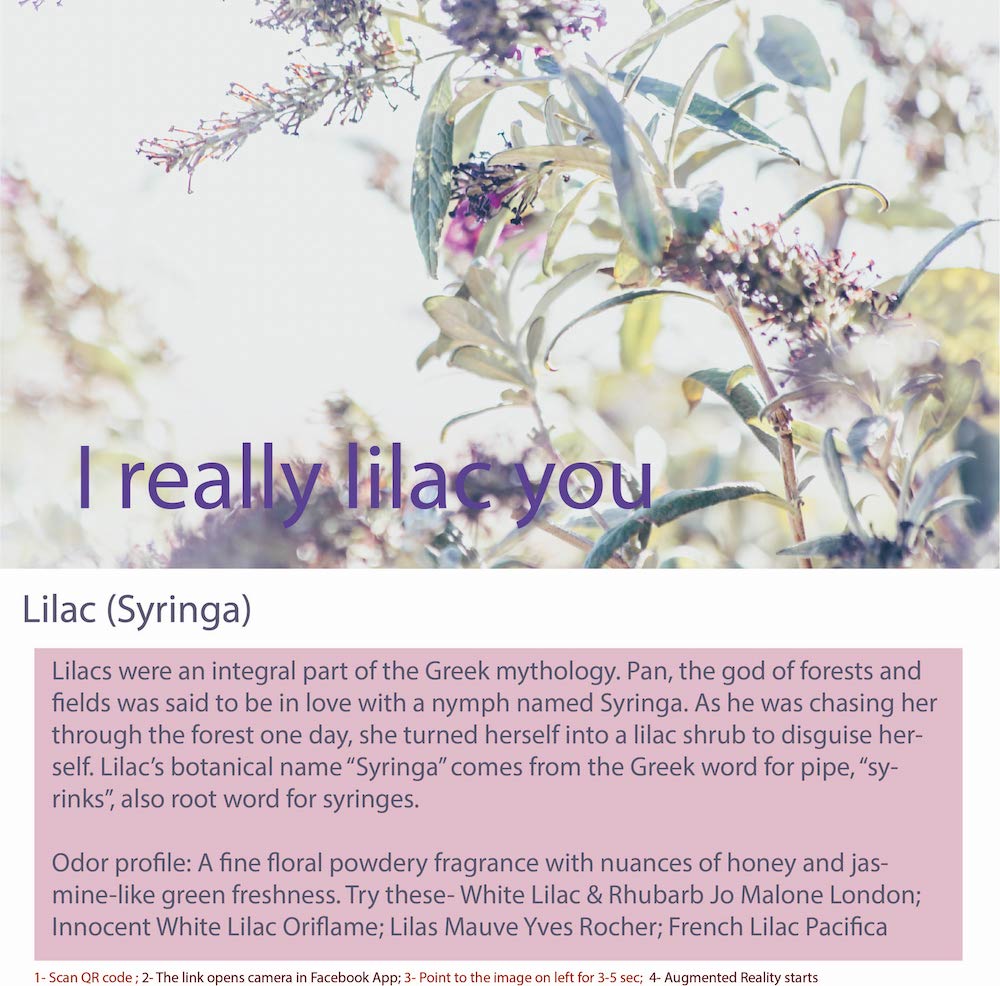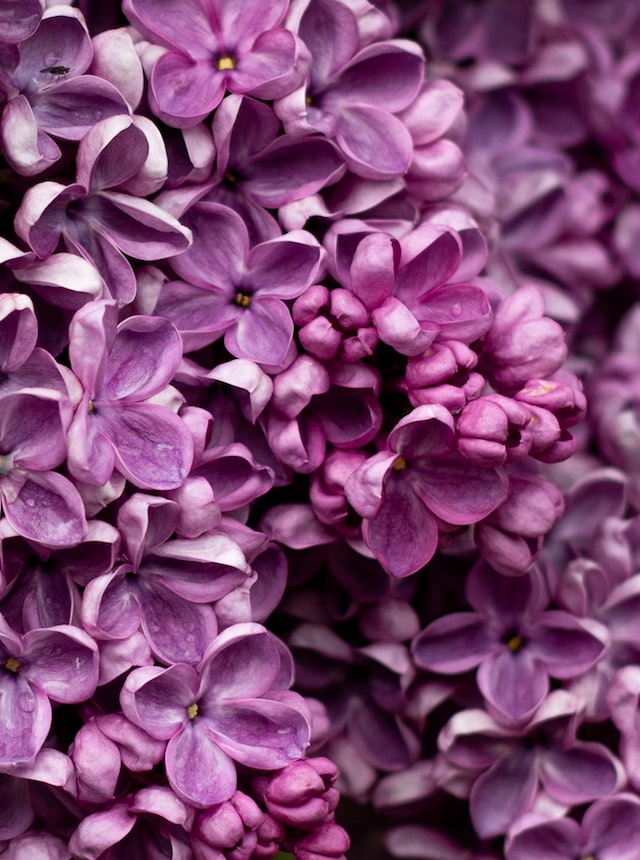Crafting Fragrances with Premium Lilac Raw Material
Lilac: The Enchanting Blossom of Elegance and Nostalgia
Introduction: Lilac, with its clusters of delicate and fragrant blossoms, is a timeless symbol of beauty and nostalgia. The alluring scent of lilacs has inspired perfumers, and the therapeutic potential of lilac essential oil has intrigued practitioners of aromatherapy. While lilac is not commonly used in food or traditional medicine, its presence in gardens and its historical significance make it an emblem of elegance and charm. This essay explores the enchanting world of lilacs, tracing its use in perfumes, its therapeutic properties, its occasional presence in food, and uncovering some fun and crazy facts about this mesmerizing blossom.
Historical Significance and Cultural Heritage: Lilacs have a rich historical legacy that spans various cultures. Native to Europe and Asia, these flowers have been cultivated for centuries and are associated with love, beauty, and renewal. In the language of flowers, lilacs symbolize first love and youthful innocence. The plant's elegance and nostalgic appeal have made it a beloved garden favorite, often evoking memories of spring and a sense of timelessness.
Perfumes and Fragrance: The enchanting aroma of lilacs has long captivated perfumers, inspiring them to create delicate and ethereal fragrances. Although extracting essential oil from lilacs is challenging, perfumers often use synthetic compounds to replicate the flower's scent. Lilac is typically used as a middle note in perfumes, adding a romantic and nostalgic touch to floral compositions. The fragrance of lilac is associated with spring and awakening, making it a popular choice for seasonal scents.
Therapeutic Properties and Aromatherapy: Lilac essential oil, though not as commonly available as other essential oils, is reputed to have therapeutic properties. Aromatherapists believe that inhaling lilac's fragrance can evoke feelings of tranquility, reduce stress, and promote emotional balance. The subtle and calming scent of lilac is thought to uplift the spirit and create a sense of relaxation, making it an occasional choice in aromatherapy blends.
Food and Culinary Uses: Unlike some other flowers, lilacs are not commonly used in culinary applications. However, lilac blooms can be candied or used as an edible garnish in certain dishes. Some creative chefs may infuse lilac's delicate flavor into syrups, desserts, and beverages to add a floral and aromatic twist. As with any edible flower, caution must be exercised to ensure the flowers are free from pesticides and other contaminants.
Medicinal System and Health Benefits: In traditional medicine, lilacs are not extensively used for medicinal purposes. However, some historical accounts suggest that lilac leaves were occasionally applied as poultices for minor skin irritations and wounds. As with any herbal remedy, it's essential to consult a qualified healthcare professional before using lilacs for medicinal purposes.
Fun and Crazy Facts:
Lilac, with its enchanting fragrance and timeless elegance, is a captivating blossom that has left an indelible mark on human culture and imagination. Its presence in perfumes and aromatherapy evokes a sense of nostalgia and renewal, while its symbolic meanings enrich our experiences with beauty and love. While lilacs are not extensively used in food or traditional medicine, they continue to be cherished as cherished garden favorites, bringing joy and a sense of timelessness to our lives. As we admire the delicate clusters of lilac blooms, we are reminded of the simple yet profound wonders of nature and its ability to stir our emotions and transport us to a world of elegance and charm.
Introduction: Lilac, with its clusters of delicate and fragrant blossoms, is a timeless symbol of beauty and nostalgia. The alluring scent of lilacs has inspired perfumers, and the therapeutic potential of lilac essential oil has intrigued practitioners of aromatherapy. While lilac is not commonly used in food or traditional medicine, its presence in gardens and its historical significance make it an emblem of elegance and charm. This essay explores the enchanting world of lilacs, tracing its use in perfumes, its therapeutic properties, its occasional presence in food, and uncovering some fun and crazy facts about this mesmerizing blossom.
Historical Significance and Cultural Heritage: Lilacs have a rich historical legacy that spans various cultures. Native to Europe and Asia, these flowers have been cultivated for centuries and are associated with love, beauty, and renewal. In the language of flowers, lilacs symbolize first love and youthful innocence. The plant's elegance and nostalgic appeal have made it a beloved garden favorite, often evoking memories of spring and a sense of timelessness.
Perfumes and Fragrance: The enchanting aroma of lilacs has long captivated perfumers, inspiring them to create delicate and ethereal fragrances. Although extracting essential oil from lilacs is challenging, perfumers often use synthetic compounds to replicate the flower's scent. Lilac is typically used as a middle note in perfumes, adding a romantic and nostalgic touch to floral compositions. The fragrance of lilac is associated with spring and awakening, making it a popular choice for seasonal scents.
Therapeutic Properties and Aromatherapy: Lilac essential oil, though not as commonly available as other essential oils, is reputed to have therapeutic properties. Aromatherapists believe that inhaling lilac's fragrance can evoke feelings of tranquility, reduce stress, and promote emotional balance. The subtle and calming scent of lilac is thought to uplift the spirit and create a sense of relaxation, making it an occasional choice in aromatherapy blends.
Food and Culinary Uses: Unlike some other flowers, lilacs are not commonly used in culinary applications. However, lilac blooms can be candied or used as an edible garnish in certain dishes. Some creative chefs may infuse lilac's delicate flavor into syrups, desserts, and beverages to add a floral and aromatic twist. As with any edible flower, caution must be exercised to ensure the flowers are free from pesticides and other contaminants.
Medicinal System and Health Benefits: In traditional medicine, lilacs are not extensively used for medicinal purposes. However, some historical accounts suggest that lilac leaves were occasionally applied as poultices for minor skin irritations and wounds. As with any herbal remedy, it's essential to consult a qualified healthcare professional before using lilacs for medicinal purposes.
Fun and Crazy Facts:
- Lilac's Botanical Name: The scientific name of lilac is Syringa vulgaris. The genus name "Syringa" is derived from the Greek word "syrinx," which means "tube" or "pipe," referring to the plant's hollow stems.
- First Lilacs in North America: Lilacs were first introduced to North America in the 18th century. They quickly became popular garden plants, and many historic gardens in the United States and Canada feature lilac collections.
- Lilacs in Literature: Lilacs have been immortalized in literature by renowned poets like Walt Whitman, who penned the poem "When Lilacs Last in the Dooryard Bloom'd" as a tribute to Abraham Lincoln.
- State Flower: The lilac is the state flower of New Hampshire, symbolizing the "hardy character of the men and women of the Granite State."
- Magical Symbolism: In certain folk beliefs, lilacs were believed to offer protection from evil spirits and were planted near homes for this purpose.
Lilac, with its enchanting fragrance and timeless elegance, is a captivating blossom that has left an indelible mark on human culture and imagination. Its presence in perfumes and aromatherapy evokes a sense of nostalgia and renewal, while its symbolic meanings enrich our experiences with beauty and love. While lilacs are not extensively used in food or traditional medicine, they continue to be cherished as cherished garden favorites, bringing joy and a sense of timelessness to our lives. As we admire the delicate clusters of lilac blooms, we are reminded of the simple yet profound wonders of nature and its ability to stir our emotions and transport us to a world of elegance and charm.
To experience augmented reality, please open the Facebook-app using QR code and point to the image below
Lilacs are a type of flowering shrub or small tree in the olive family. Lilacs are known for their fragrant, showy clusters of purple, pink, white, or yellow flowers that bloom in the spring. The most common species is Syringa vulgaris, which is native to the Balkans and western Asia. Lilacs are popular ornamental plants and are often used in gardens, parks, and as landscape plants. They are also used in traditional medicine and have been used in perfumes, soaps, and other products.
Unveiling the Essence of Lilac Soft Floral Raw Material
In painting, the color lilac is often used to depict a sense of calm and serenity. It is also associated with springtime and the blooming of lilac flowers. In literature, the color lilac can be used symbolically to represent these same qualities, as well as femininity and purity. It is also often used to create a mood or atmosphere in a scene.
In literature, the lilac flower and its color have been used as symbols in various works. For example, in Emily Dickinson's poem "Because I could not stop for Death," the speaker reflects on death as a carriage ride, and the lilacs represent the passage of time and the fleeting nature of life. In Kate Chopin's novel "The Awakening," the protagonist Edna Pontellier is described as having "a quick vision of lilacs" which symbolizes her own awakening to her desires and individuality. In F. Scott Fitzgerald's "The Great Gatsby" the lilacs symbolize the tragic love between Gatsby and Daisy, as well as the death of Gatsby.
A poem on Lilac:
Lilacs in the garden,
Purple and serene,
A sweet and fragrant symbol
Of the coming spring.
Their delicate petals
Soft to the touch,
A gentle reminder
Of nature's beauty and hush.
With every breeze
Their scent is carried,
A soothing balm
For the soul that's harried.
But as the days pass
Their blooms will fade,
Leaving behind
A memory that's made.
Like life and love
They are fleeting and rare,
But the beauty of lilacs
Will always be there.
In literature, the lilac flower and its color have been used as symbols in various works. For example, in Emily Dickinson's poem "Because I could not stop for Death," the speaker reflects on death as a carriage ride, and the lilacs represent the passage of time and the fleeting nature of life. In Kate Chopin's novel "The Awakening," the protagonist Edna Pontellier is described as having "a quick vision of lilacs" which symbolizes her own awakening to her desires and individuality. In F. Scott Fitzgerald's "The Great Gatsby" the lilacs symbolize the tragic love between Gatsby and Daisy, as well as the death of Gatsby.
A poem on Lilac:
Lilacs in the garden,
Purple and serene,
A sweet and fragrant symbol
Of the coming spring.
Their delicate petals
Soft to the touch,
A gentle reminder
Of nature's beauty and hush.
With every breeze
Their scent is carried,
A soothing balm
For the soul that's harried.
But as the days pass
Their blooms will fade,
Leaving behind
A memory that's made.
Like life and love
They are fleeting and rare,
But the beauty of lilacs
Will always be there.
Unveiling the Essence of Lilac Soft Floral Raw Material
The lilac is a species of flowering plant in the olive family and is native to the Balkans and western Asia. It has been cultivated for centuries for its fragrant flowers and has a rich history in many cultures.
In ancient Greece, the lilac was associated with the goddess Aphrodite and was believed to have aphrodisiac properties. In medieval Europe, lilacs were commonly found in monastery gardens and were considered a symbol of purity and humility.
In the 19th century, the lilac was introduced to North America and quickly became a popular ornamental plant. Today, there are many different varieties of lilacs available, ranging in color from white to pink to purple, and they are commonly used in gardens and landscaping.
In addition to its ornamental uses, the lilac has also been used for medicinal purposes. The flowers and leaves have been used to make remedies for various ailments, including headaches, fevers, and respiratory issues. The oil extracted from the flowers has been used in perfumes and soaps.
The lilac is also a popular subject in art and literature, and it is often used as a symbol of spring, youth, and love.
In ancient Greece, the lilac was associated with the goddess Aphrodite and was believed to have aphrodisiac properties. In medieval Europe, lilacs were commonly found in monastery gardens and were considered a symbol of purity and humility.
In the 19th century, the lilac was introduced to North America and quickly became a popular ornamental plant. Today, there are many different varieties of lilacs available, ranging in color from white to pink to purple, and they are commonly used in gardens and landscaping.
In addition to its ornamental uses, the lilac has also been used for medicinal purposes. The flowers and leaves have been used to make remedies for various ailments, including headaches, fevers, and respiratory issues. The oil extracted from the flowers has been used in perfumes and soaps.
The lilac is also a popular subject in art and literature, and it is often used as a symbol of spring, youth, and love.
Elevate Your Perfume Creations with Our Women-Centric Fragrance Ingredient
Here are some fun facts about lilacs that may surprise you:
- Lilacs are a popular choice for wedding bouquets and floral arrangements. The flowers are known for their sweet fragrance and delicate beauty, and they are often used to symbolise love and new beginnings.
- Lilacs have been used to make perfumes for centuries. The essential oil extracted from the flowers is known for its delicate, floral scent and is often used in high-end perfumes and soaps.
- In the 19th century, lilacs were considered a status symbol among wealthy landowners and were often planted in grand gardens and estates.
- Lilacs are considered an invasive species in some parts of North America. The plant can quickly spread and outcompete native plants, making it a threat to local ecosystems.
- The largest collection of lilacs in the world can be found at the Arnold Arboretum in Boston, Massachusetts, USA. The arboretum has over 460 varieties of lilacs, some of which are incredibly rare and expensive.
- Some lilacs are not cold hardy, so they are only grown in certain climates. Some varieties are also grafted and this makes them more expensive than the common varieties.
- Lilacs can live for a very long time. They can live for up to 100 years with proper care, making them a long-lasting and valuable addition to any garden.
Quality and Purity: Our Commitment to Perfumery Supplies
The scent of lilacs is commonly described as sweet, floral, and fresh. The fragrance is often associated with springtime and is considered to be a symbol of renewal and new beginnings. The aroma of lilacs is often used in perfumes, candles, and other scented products. The scent comes from the essential oils found in the flowers of the lilac bush.
There are several famous perfume brands that have released fragrances featuring the scent of lilacs. Some examples include:
- Jo Malone Lilac & Rhubarb: This fragrance features a blend of lilac and rhubarb, creating a fresh and floral scent.
- Dior J'adore Lilac: This scent features a blend of lilac, jasmine, and rose, creating a floral and romantic aroma.
- Tom Ford Lilac Path: This fragrance features a blend of lilac, iris, and violet, creating a fresh and floral scent.
- JoAnne Bassett Lilac: This is a artisan perfumer that creates perfumes featuring Lilac scent.
- The Different Company Osmanthus & Lilac: This fragrance features a blend of Osmanthus and Lilac, creating a fresh and floral scent.
Join Scentopia, Sentosa's latest tourist attraction wonderful orchid scent crafting, fragrance tour, bridal shower or corporate team building which includes perfume making onsite and offsite, beach activities and more. We also serve primary school learning journey, secondary students and pupil on industrial excursions. Know more about our orchids perfume bar or therapeutic orchid scents and other wellness aromas. Conatct Perfume workshop or book a scent crafting session here.






